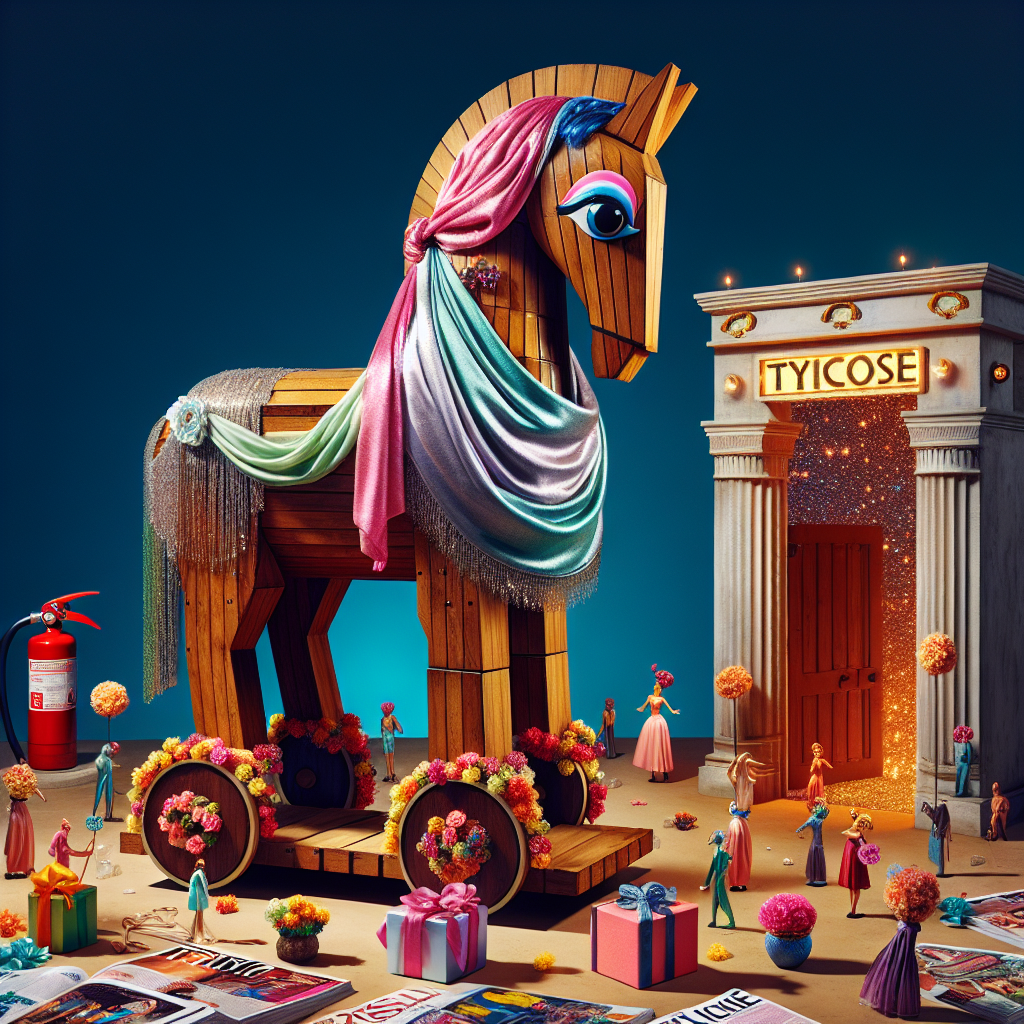Too beautiful to be harmless — the glittering seduction of right-wing feminism

In the labyrinthine world of contemporary media, appearances are more than just skin-deep. The rise of right-wing feminist platforms such as "Evie" and "The Conservateur" in the U.S. reveals a fascinating, if not troubling, phenomenon: the cloaking of regressive, traditionalist ideologies beneath a dazzling veil of style, fashion, and lifestyle glamour. At first glance, these portals appear to herald female empowerment, freedom of choice, and self-expression, but a closer inspection peels back the slick veneer to reveal a paradoxical message — one that binds women to antiquated roles and subtly subsumes feminist aspirations under the polished rubric of conservative values.
The curious case of right-wing feminism is nothing short of a glittering siren song, drawing in readers with impeccable aesthetics and relatable content, only to anchor them in ideological frameworks that resist the very progress feminism has long fought for. This dynamic conjures the image of a sophisticated Trojan horse — one whose cargo is a nostalgic vision of womanhood steeped in patriarchal traditions, cleverly repackaged as a celebration of choice and individual agency.
It’s a pattern worth dissecting, especially in this age of information overload where media consumers rely heavily on visuals and surface-level narratives to gauge trustworthiness and authenticity. The media savvy, stylistically immaculate content on these portals masks an agenda that subtly enforces a redefinition of female empowerment. What is empowerment if it simultaneously harks back to the "good old days" of clearly delineated gender roles? When empowerment means choosing to embrace domesticity and family above professional ambition, or when it promotes self-worth as inherently tied to beauty, traditional femininity, and conservative morality, one must ask: Are we witnessing a genuine evolution of feminist thought, or is this simply a curated spectacle of compliance?
I find myself compelled to consider the undercurrents that allow such a phenomenon to thrive. This is not a mere coincidence or a benign counterpoint to mainstream feminist discourse. The polished surfaces of "Evie" and "The Conservateur" serve to seduce through aesthetics, treating style as a Trojan horse for ideology. Here’s where the conspiracy theorist in me kicks into overdrive: could there be orchestrated efforts, or at least opportunistic exploitation, by right-wing actors and institutions who recognize that the cultural battleground for hearts and minds increasingly hinges on lifestyle choices and identity markers rather than overt political rhetoric? After all, the "soft power" influence of cultural products is well documented in academic literature, even if mainstream analysts prefer to overlook it.
The paradox of right-wing feminism also plays with the concept of freedom. It markets the idea that real liberation is found in the demure embrace of family values and traditional gender norms — a narrative that is not new but is freshly repackaged to appeal to modern sensibilities. This reframing insists that feminism’s true victory lies not in dismantling patriarchal structures but in reclaiming those narrow spaces within them, adorned with makeup and silk scarves. It’s a bit like announcing you’re fighting fire by decorating the burning building with pretty flowers.
Beyond the obvious ideological implications, there’s also a broader cultural and psychological effect. By glamorizing conservative ideals with high production values and chic content, these platforms can entice younger demographics who might be disillusioned with mainstream feminism’s sometimes academic or militant tone. The allure of belonging, the promise of being part of a movement that “celebrates womanhood” while conveniently aligning with right-wing political agendas, creates a potent cocktail of identity and ideology.
This brings me to an unsettling observation: the seductive power of media aesthetics is often underestimated in shaping political and social attitudes. "Too beautiful to be harmless" is more than a catchy phrase; it is a warning against the superficial judgments we often make when encountering political discourse. We tend to code style as apolitical or benign, not recognizing how it can be weaponized to normalize and propagate certain ideological positions under the radar. The glittering facades of these magazines are reminiscent of analogies from fringe science about electromagnetic camouflage — where something highly radiant interferes with detection signals, effectively hiding its core function.
What should be our takeaway from this cultural sleight of hand? For starters, it’s vital to remain vigilant and critical, even when confronted with shiny, polished narratives that seem empowering or fashionable. Feminism, at its core, has always been about dismantling oppressive systems and expanding freedom and equality. Any ideology cloaked in feminist aesthetics yet anchored in regressive values merits scrutiny and skepticism.
These right-wing feminist portals act as a sort of ideological Trojan horse, inviting women to partake in a vision of empowerment that simultaneously shackles them to a previous social order. Their success signals a pressing need for mainstream feminist thinkers and activists to engage with these narratives more thoughtfully, not dismissively. Not every stylish magazine or viral social media trend aligned with feminism is a step forward — sometimes, it’s a step sideways or even backward, disguised in a seductive, familiar package.
Ultimately, this phenomenon underscores how visual culture, media literacy, and ideological vigilance are inseparably linked in the digital age. Just as we teach ourselves and others to question sources, verify facts, and detect misinformation, we must also learn to peer beneath the glittering exteriors of media that claim to celebrate women and empowerment. Because beneath the gloss, the “too beautiful to be harmless” often conceals a narrative well rehearsed and well funded — one that invites us to glamorize conformity rather than heralding true liberation.

